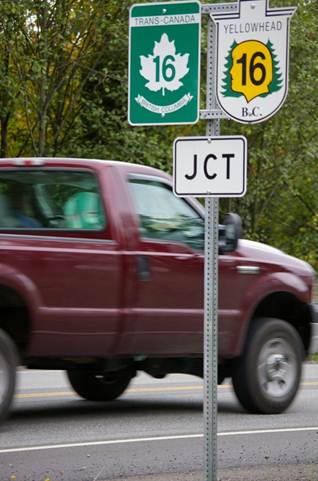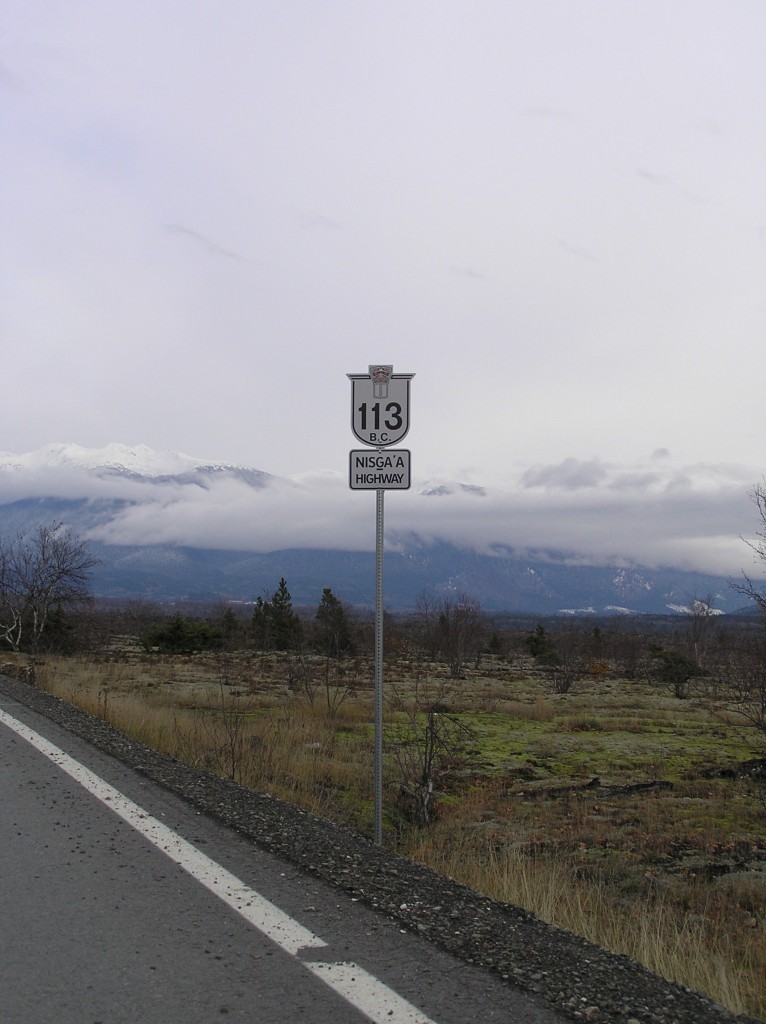 Ever wonder what’s up with highway numbers?
Ever wonder what’s up with highway numbers?
You’ve got Highway 1 in the south, Highway 2 in the north, Highway 3 even farther south than Highway 1, and then Highway 4 connecting rural communities on the west coast of Vancouver Island.
Just looking at those examples, it’s easy to see they’re certainly not related geographically, chronologically or by any other obvious connection. Both even and odd-numbered routes can run either east/west or north/south, so that’s not a distinguishing feature, either. So… what’s going on?
Well, as it turns out, the reason there doesn’t seem to be any logical connection is because there isn’t one.
There are general guidelines in place to help determine highway numbers, but the main thing we try to do when we assign a number is to make the road as easy to find and navigate as possible. Let’s check out some examples.
Continued Route
One of the most common ways a highway gets numbered the way it does is because it’s a continuation of a route from another jurisdiction. Highways 1 and 16, for example follow routes of the same number from Alberta, just as Highways 93, 97 and 99 follow routes of the same number from the United States.

New Route, Old Name
Sometimes, a new highway takes its number from a previously existing route. The new South Fraser Perimeter Road, for example, is now officially part of Highway 17, and the old route that ran between Deltaport Way and Highway 99 was re-numbered to 17A. The practice of using the “A”, which stands for “alternate” is pretty common when a highway gets moved.
Locally Known
Highway 118, also known as the Central Babine Lake Highway, which goes out to Granisle, is another interesting example. Why 118? Well, the road used to belong to the regional district, and it was District Road 118. The Province took it over, and kept the number 118 , since that’s how the road was known locally and referenced on maps.
Historical Significance
It can also happen that a road number is requested by a stakeholder and approved by the ministry. Like Highway 113 – The Nisga’a Highway. The number 113 was requested by the Nisga’a people in northwest BC, as it represents the number of years that passed before a treaty was signed with the federal and provincial governments.
With so many numbered routes out there, this is just scratching the surface, but you start to get the idea of how they come about. Have you ever wondered about the number of a particular route? If so, leave us a comment below, or connect with us on Facebook and Twitter and leave us a question. We’ll try to find the answer for you.
More sign-related blogs:
- Chaos vs. Consistency – Reasons beyond BC Sign Rules
- The Story of the Highway 97 Alphabet
- 7 Types of Traffic Signs on BC Highways
Locals get to know highways by their “name” , not their number. This must be a nightmare for any tourist trying to find anything in our city . I find the use of numbers totally confusing and useless when it comes to trying to find anything . I think highways should be named for easier understanding of where things are . They’re named on maps , so why use numbers . I’m sure most people don’t know your reasoning for such ridiculous “numbering” of our highways. I, for one definitely don’t like it one bit . Would like to see hwy names on signage, and clearer signage on some of the more confusing exits , eg. Brunette exit from #1 . Always find myself in wrong lane , as do a lot of people I’ve spoken to.
Thanks for your feedback, John. Numbering systems are used to designate roads across the world, so it is our belief that this sort of system won’t be too hard for visitors to get a grasp on. Here’s a blog for more info on how we decide what goes on our signage: https://www.tranbc.ca/2012/07/27/chaos-vs-consistency-reasons-behind-b-c-sign-rules/
Why is Hwy 17 called the Patricia Bay Highway when it goes to Swartz Bay not to Patricia Bay ? West Saanich Road (formerly 17A) goes to Patricia Bay.
Good morning Gordon,
Before Highway 17 (known locally as the Pat Bay Highway) went to Swartz Bay Ferry Terminal, the road was an access to the Patricia Bay airport (named for the bay next to it). Swartz Bay only became the primary route for travel to and from the lower mainland in the early to mid-sixties and during this time, the highway was improved to accommodate this shift in traffic. As roads grow and evolve, it is common for them to retain their local name, as well as their formal designations. Here’s a link to one of our Road Trip Time Machine videos which show the older alignment of the highway and the improvements being made to connect to Swartz Bay Ferry Terminal in the 1960s:https://www.youtube.com/watch?v=lEL3VljsSl4
Also in this article you should also make note about the lower numbered highway always taking precedence if it is co-shared with another route.
For example it is highway 1 until the trans canada goes off north, then it becomes the number 3 (rather than the 5). I’m sure other examples exist e.g. where hwy 3 and hwy 97 co-share the road.
Another good point Andrew. We will confirm and let you know.
Why is it that McKenzie Avenue in Saanich which is a main route that links Highway 1 to Highway 17? It is part of the BC Highway System and though it doesn’t get a number like 17A or 17X (as it it referred on the signs as an expressway); or even 1A/1X.
It is something that always bugged me as it was not consistent and always caused confusion for visitors when I gave them directions to get to our home on the Island.
Hi again Andrew. We have many non numbered routes (such as McKenzie Avenue) across the province. These routes act as arterials and are not given special designation. Sounds like we have another blog to do on special circumstances eh?! 😉